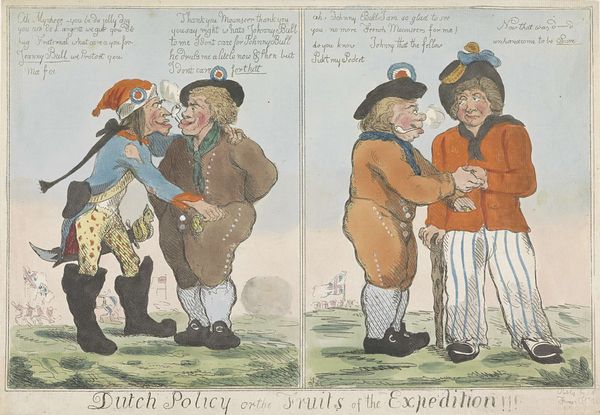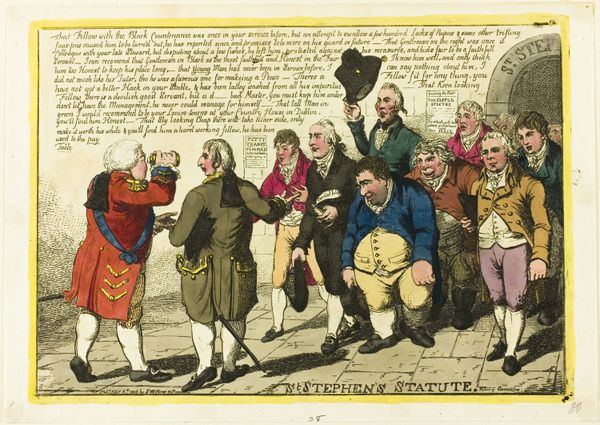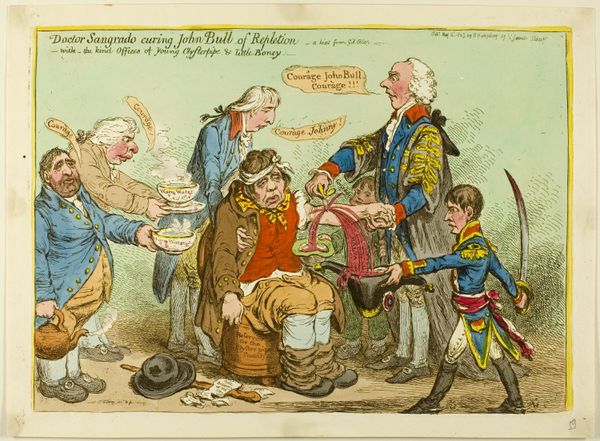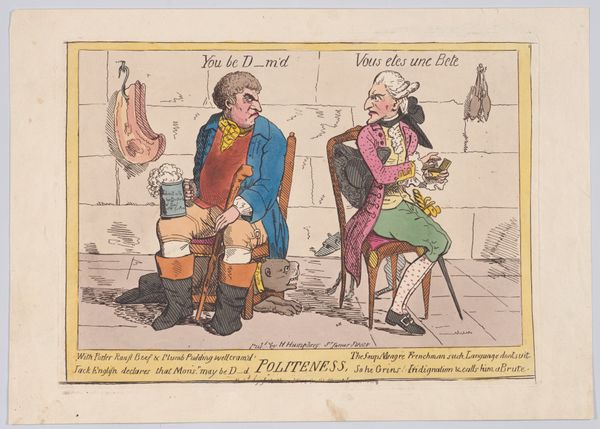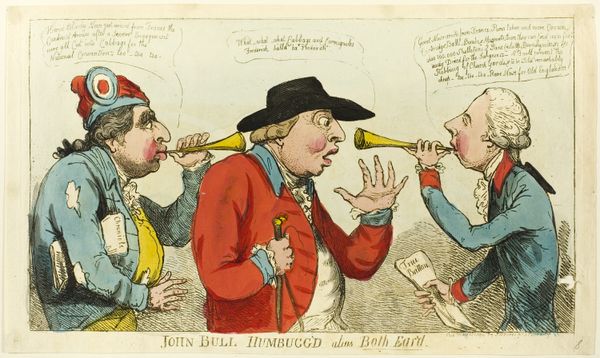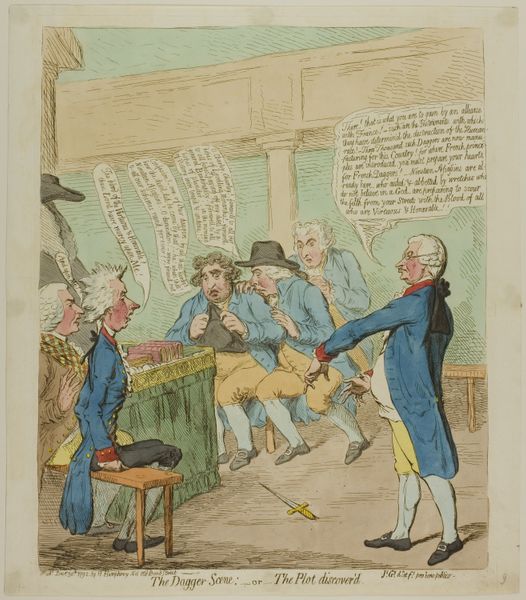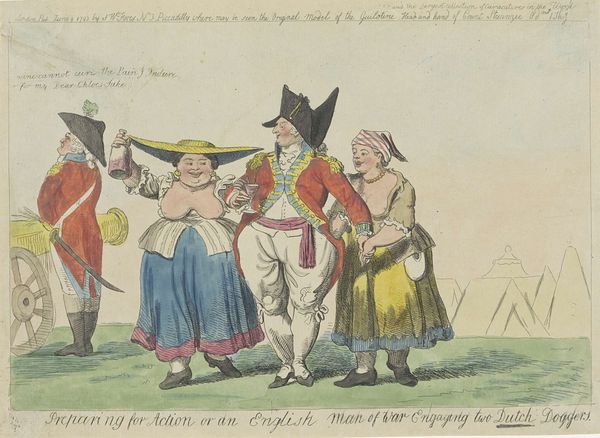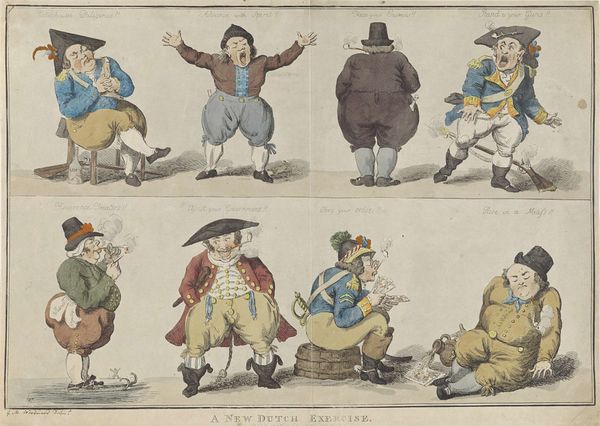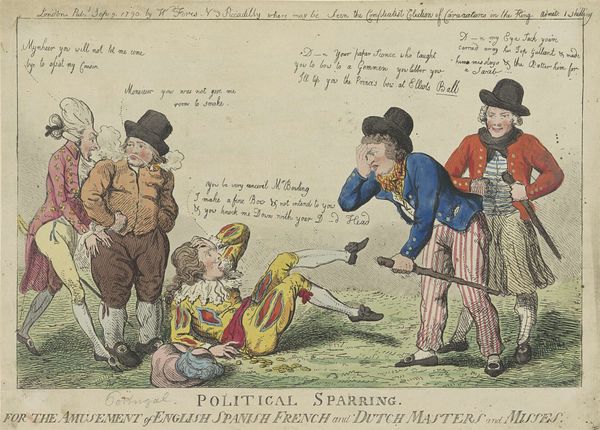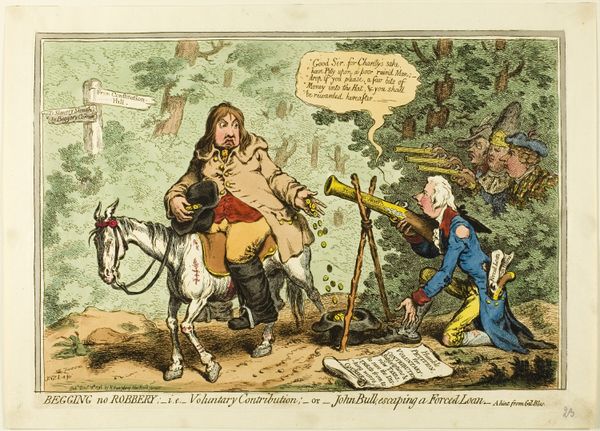
drawing, print, etching, engraving
#
drawing
# print
#
etching
#
caricature
#
caricature
#
romanticism
#
history-painting
#
engraving
Dimensions: 223 × 336 mm (image); 255 × 360 mm (plate); 255 × 375 mm (sheet)
Copyright: Public Domain
Curator: Take a look at this etching with engraving. Titled "An Irish Union!," it's attributed to Isaac Cruikshank and thought to have been created around 1799. Editor: My first thought? The figures are incredibly expressive, bordering on grotesque. The whole scene feels tense and…well, deceptive. Curator: Indeed. Cruikshank was known for his caricatures. This piece comments directly on the Act of Union between Great Britain and Ireland. Notice how Britannia and Hibernia join hands? Editor: Yes, but Hibernia—symbolizing Ireland—looks rather reluctant. She's being ushered forward by figures I assume represent English interests, while another whispers in her ear and still another is thrusting a stack of pamphlets. Her body is facing another direction and it doesn't read like a joyful moment for the personified symbol of Ireland. What do the surrounding inscriptions suggest about it? Curator: Exactly. It is all very leading, isn't it? There's clearly an element of coercion being depicted. The inscriptions above the characters are their speech bubbles and the sentiment does seem somewhat against a true, consensual, political agreement. Editor: The artist uses symbolism to convey a specific perspective. It's more than just historical documentation; it's a visual argument against the union, and a reminder of the psychological landscape of Ireland’s position in Great Britain, even reflected on a symbolic level. It is really about the artist’s perspective on whether the joining parties truly wanted the "Union" Curator: Precisely. This work, now residing at the Art Institute of Chicago, acts as a critical lens through which we can examine the complex power dynamics of that historical moment, one that echoes with political reverberations even now. Editor: The print certainly encapsulates the era's anxieties and uses its symbolism effectively, reminding us how political events are often filtered and interpreted through a distinctly cultural lens.
Comments
No comments
Be the first to comment and join the conversation on the ultimate creative platform.
